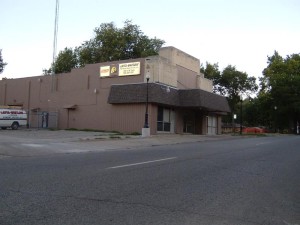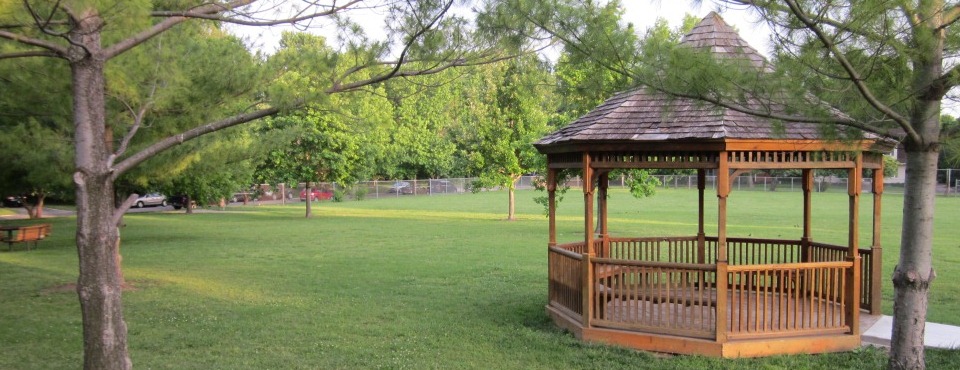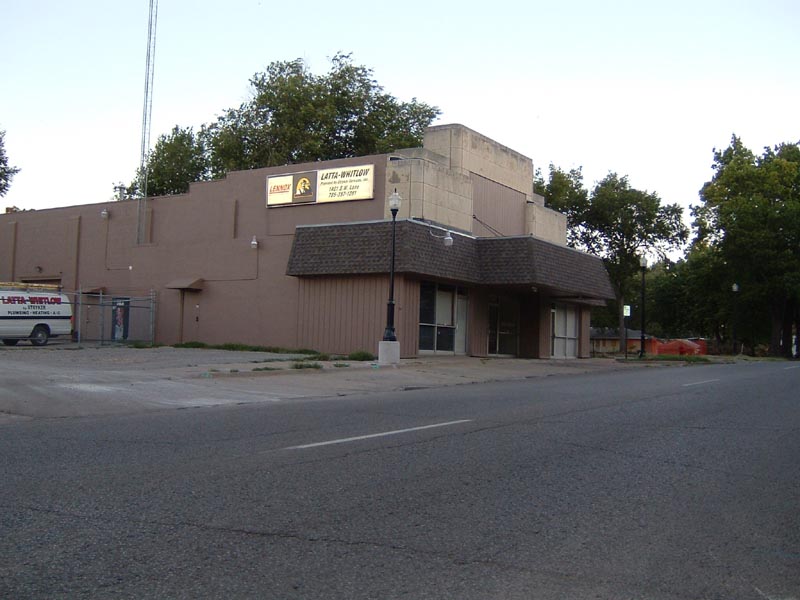The history of the College Hill neighborhood is interconnected with the history of Washburn University, creating a bond between its residents and the school that continues today. Lincoln College (est. 1865) was renamed Washburn College in 1868, in recognition of a $25,000 donation by Ichabod Washburn, a church deacon and resident of Worcester, Massachusetts. Washburn relocated from the corner of 10th and Jackson to its present site at 17th and Washburn in 1874. The new campus was a gift of 160 acres of farm land from John Ritchie. A pressing issue for the college administrators, however, was that the relocation would put the school one mile outside of the city limits of Topeka, away from housing and transportation. Looking to the future, these visionaries felt up to the challenge.
Dr. Peter McVicar, President, authorized the purchase of land north of the college for a residential district that would serve a two-fold purpose: 1) attracting faculty for the school and 2) boarding opportunities for students. The earliest acquisition was land between 15th and 17th (then Euclid Avenue), a plat dated Nov. 5, 1880 that included both sides of College Avenue and the east side of Boswell Avenue. The name, “College Hill,” was decided by Ritchie who pointed out that he could see an upward rise from his farm at 10th and Kansas. In fact, Washburn’s campus is about forty feet higher than downtown Topeka, or approximately the height of a 4-story building. Over time, contiguous plats expanded the residential area which is today known as the College Hill neighborhood. The perimeter is the west side of Washburn Avenue, south side of Huntoon Street, west side of MacVicar Avenue, and the north side of 17th Street.
Transportation was addressed when the city established a mule-drawn street car line to the school which was later replaced by the electric trolley in 1890. College Avenue is one of the widest residential streets in Topeka due to the inclusion of trolley tracks down the center. The new modern transportation system that started at the Santa Fe stations and ended at the entrance of Washburn University on College Avenue brought a boon to the College Hill neighborhood.
Dr. McVicar initiated a campaign for planting trees on campus and throughout the College Hill neighborhood. The goal was to plant as many varieties of trees as possible; those indigenous to Kansas and species from neighboring states. To this day, pedestrians can enjoy a botanical education walking through the neighborhood and inroads on campus. Some trees were lost during the tornado of 1966 but there are still many elms, hackberries, cedar and catalpa trees that date back to the 1880’s. Thanks to the initiative of neighborhood residents, and a subsequent campus tree planting project by Washburn President, Dr. Jerry Farley, this primary characteristic of the area will continue for years to come.
The trees weren’t the only diverse aspects of the neighborhood. A variety of architectural styles originated around the turn of a new century. Examples of Queen Anne’s and Folk Victorian’s co-exist along side of styles from the Arts & Crafts Movement that celebrated nature and the environment. These styles included American Foursquare, Prairie, Mission, Shingle, and Craftsman Bungalows. Technological advances led to mass production of decorative architectural moldings and the resurgence of Revival styles: Neoclassical, Greek, Colonial, Georgian, Dutch Colonial, and Tudor. With the machine age also came non-traditional styles such as Art Moderne, and later, the Ranch. Over sixteen different examples of architecture are found in College Hill, ranging from the International Style home on 17th Street to the Cotswold Cottage on MacVicar .
Consistent with a college community, early College Hill residents were free thinkers, educated, and valued other perspectives. Many left a legacy in Topeka, the state of Kansas, and beyond. Judges, professors, physicians, writers, civic leaders, lawyers, architects, artists, and ministers put down roots in College Hill and have descendants that call College Hill home still today. The Wall of Fame in Boswell Square was built as a memorial to these individuals. Each year, second Sunday in October, the neighborhood puts out the welcome mat during the Wall of Fame Celebration where recognition is given to former residents and historic homes are toured. In 2001, the College Hill Nautilus Club (est. 1894) was awarded the Historic Preservation Award by Historic Topeka for spearheading the Wall of Fame project.
Every neighborhood has an identity, a theme that brings recognition. Oddly, the one common characteristic appears to be “diversity,” a word for differences. College Hill is a neighborhood of diverse people from different occupational and economic backgrounds; who value and freely debate different ideas; live in homes from many architectural styles canopied by a variety of trees, who choose to live together as good neighbors.
 The Co-Ed, the first theater in Topeka in the residential areas and not located in business areas, operated in that location from 1937 to 1955, but it wasn’t the first occupant of a building at that address. The location first served as the home of Topeka Fire Station No. 5 from 1926 to 1931. Mr. and Mrs. Simon Galitzki purchased the station when the city abandoned it, according to a history of College Hill published in 1962 by the Shawnee County Historical Society as its 39th Bulletin. The history of College Hill was written by Hermione van Laer Adams, who attended Topeka public schools and graduated from Washburn University in 1912. She taught in Topeka schools, and in 1920, she married Paul Adams, a member of another pioneer family of Shawnee County. They lived in Mexico and Venezuela for 25 years, where he was connected with the oil business. They retired in 1945. The Galitzki couple planned the theater to cater to the family trade, according to the Bulletin. “The interior of the building was attractively decorated and arranged and the seats comfortable,” according to the story. “The seating was divided into three sections separated by two carpeted aisles and had a capacity of 600 people .” Doors of the theater opened on Oct. 16, 1937, for a showing of “Cafe Metropole” starring Loretta Young, Tyrone Power and Adolphe Menjou; a short, “Love Nest on Wheels,” starring Buster Keaton; and a color cartoon, “Circus Days.” Shows were offered at 7 and 9 p.m. with matinees Saturday and Sunday. Patronage at the Co-Ed began falling off, and the decision was made to close it, according to the society’s story. The City Recreation Commission next took a three-year lease on the building, where it offered recreational activities. C.E. Sandeffer was the next person to lease the building, and it was the home of an auction house for a long time. Some of the other occupants of the former theater were Jack Simon’s Barber Shop, Johnson Music Mart, State Farm Insurance Co., Marjie’s Bakery and Roto-Rooter Sewer Service. Latta Whitlow was the final occupant of the property.
The Co-Ed, the first theater in Topeka in the residential areas and not located in business areas, operated in that location from 1937 to 1955, but it wasn’t the first occupant of a building at that address. The location first served as the home of Topeka Fire Station No. 5 from 1926 to 1931. Mr. and Mrs. Simon Galitzki purchased the station when the city abandoned it, according to a history of College Hill published in 1962 by the Shawnee County Historical Society as its 39th Bulletin. The history of College Hill was written by Hermione van Laer Adams, who attended Topeka public schools and graduated from Washburn University in 1912. She taught in Topeka schools, and in 1920, she married Paul Adams, a member of another pioneer family of Shawnee County. They lived in Mexico and Venezuela for 25 years, where he was connected with the oil business. They retired in 1945. The Galitzki couple planned the theater to cater to the family trade, according to the Bulletin. “The interior of the building was attractively decorated and arranged and the seats comfortable,” according to the story. “The seating was divided into three sections separated by two carpeted aisles and had a capacity of 600 people .” Doors of the theater opened on Oct. 16, 1937, for a showing of “Cafe Metropole” starring Loretta Young, Tyrone Power and Adolphe Menjou; a short, “Love Nest on Wheels,” starring Buster Keaton; and a color cartoon, “Circus Days.” Shows were offered at 7 and 9 p.m. with matinees Saturday and Sunday. Patronage at the Co-Ed began falling off, and the decision was made to close it, according to the society’s story. The City Recreation Commission next took a three-year lease on the building, where it offered recreational activities. C.E. Sandeffer was the next person to lease the building, and it was the home of an auction house for a long time. Some of the other occupants of the former theater were Jack Simon’s Barber Shop, Johnson Music Mart, State Farm Insurance Co., Marjie’s Bakery and Roto-Rooter Sewer Service. Latta Whitlow was the final occupant of the property.
